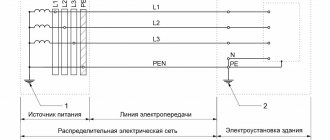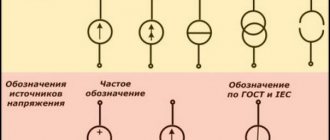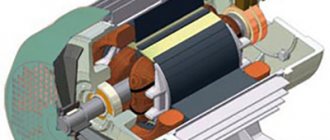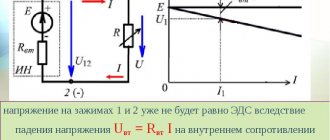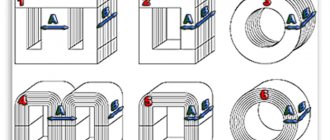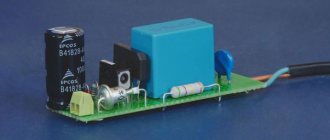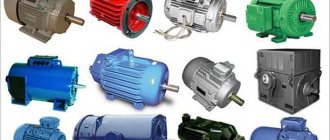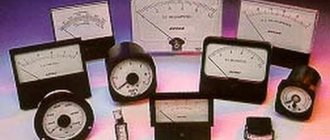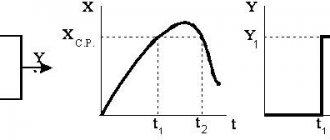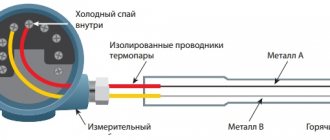PRIMARY SECONDARY UNINTERRUPTED
Power sources are devices that provide electric current to electrical appliances, devices, etc. They are divided into two types:
- primary;
- secondary.
The primary ones themselves generate electrical energy by converting into it other types of energy obtained as a result of chemical and other reactions.
These include various power plants (thermal, nuclear, hydraulic), chemical converters (batteries, galvanic and fuel cells), thermoelectric and photovoltaic generators (solar batteries), etc.
Secondary ones are designed to convert electricity received from a primary source into voltage with the required parameters. For power supply and normal functioning of most electronic devices, a stable voltage with varying values is required.
Secondary sources take the form of separate blocks or are included in various electronic components. In addition to the power source itself, nodes may include additional devices that support its normal operation when exposed to various external factors. Secondary ones include transformer and inverter converters, rectifiers, etc.
The concept of primary and secondary sources is relative. For example, the household electrical network is the primary source for household electrical appliances, since most devices have their own external or built-in power supply that converts the input voltage to the required values.
In turn, the transformer substation, from which the household electrical network is powered, is itself a secondary source in relation to the power plant.
SOURCES OF PRIMARY NUTRITION
As mentioned, primary sources include devices that convert various types of energy into electricity. This can be chemical, mechanical energy, light, thermal and atomic decay energy.
Main types of primary sources:
- hydroelectric power plants - convert the gravitational energy of water into electricity;
- chemical sources (batteries, fuel and galvanic cells) – convert chemical energy into electrical energy;
- diesel generators – chemical energy is converted first into mechanical, then into electrical;
- solar panels – convert the energy of sunlight into electrical energy based on the physical law of the photoelectric effect;
- wind generators – convert the kinetic energy of air particles;
- thermoelectric converters – convert thermal energy into electrical energy.
Chemical sources are typically used in low-power applications and as backup sources. Fuel cells operate based on the electrical oxidation of fuel. In thermoelectric devices, an electrical potential is created by a temperature difference.
By number of phases
- single-phase (220 V 50 Hz), only single-phase consumers can be powered from such a generator set;
- three-phase (380 V, 220 V 50 Hz) from such a generator set both three-phase and single-phase consumers can be powered. However, it must be borne in mind that the power of one phase of a three-phase station is 3 times less than the total power of the installation. It is also necessary to ensure uniform loading of the phases in order to avoid the so-called “misalignment” of the phases, which has a bad effect on the condition of the generator set.
SECONDARY POWER SOURCES
Secondary sources are connected to the primary ones and convert the received electricity into an output voltage with the required parameters of frequency, ripple, etc.
Main functions of secondary sources:
- ensuring the transmission of the required power with minimal losses;
- transformation of the voltage form (alternating voltage into direct voltage, changing the frequency, forming pulses;
- transforming the voltage value (increasing or decreasing its value, forming several values for different circuits);
- voltage stabilization (its output values must be within a given range);
- protection (so that voltage exceeding permissible values due to a malfunction does not damage the equipment or the power supply itself);
- galvanic separation of circuits.
There are two main types of secondary power sources (SPS) - transformer and pulsed.
Transformer power supply.
Transformer or linear IVP is a classic power supply. The output voltage is adjusted continuously, that is, linearly.
Its design sequentially includes:
- transformer (adjusts the voltage in one direction or another to the required value);
- rectifier (converts alternating voltage to direct voltage);
- filter (smoothes out ripples (oscillations) in the rectified voltage).
The circuit may also include short circuit protection, a high-frequency noise filter, a stabilizer, etc.
Advantages of transformer IVP:
- simplicity of design;
- galvanic isolation from the network;
- reliability in operation.
Flaws:
- large dimensions and weight, which are directly proportional to its power;
- relatively low efficiency.
In household appliances, low-power linear power supplies are used to power control boards of washing machines, microwave ovens, and heating boilers.
Pulse IVP.
The switching power supply is designed fundamentally differently and has a more complex design.
He contains:
- rectifier (the input voltage is first rectified - converted from AC to DC);
- pulse-width modulation block - PWM (converts DC voltage into pulses of a certain frequency and duty cycle);
- frequency filter (in blocks without galvanic isolation);
- transformer (in units with galvanic isolation from the network).
In pulsed secondary voltage sources, stabilization is realized through feedback, which makes it possible to maintain the output voltage at a given level regardless of changes in input parameters.
For example, in units with galvanic isolation, depending on the magnitude of the output signal, the duty cycle (the ratio of the pulse repetition rate to their duration) at the output of the PWM controller changes.
Advantages of switching power supplies:
- light weight and small size;
- high efficiency (up to 98%);
- wide range of permissible input voltage;
- built-in protection against short circuit and other force majeure;
- low price;
- The reliability is comparable to transformer power supplies.
Flaws:
- are sources of high-frequency interference that cannot be completely eliminated;
- have a limitation on the minimum load power: they do not turn on if it is lower than the required one.
Pulse sources are mobile phone chargers, power supplies for computers, office equipment, and consumer electronics.
By launch method
- manual - used only for small portable stations, starting occurs using a cord by spinning the engine crankshaft to the frequency required for starting;
- electric starter - used for all installations, starting occurs using an electric starter by turning the ignition key;
- automatic - used for installations that have an automatic start function. Requires additional equipment. It is not necessary to have a person present when starting and accepting the load.
Now let's look at the main types of generating sets in the complex.
Nonlinear circuits at alternating currents
Nonlinear circuits are those that contain at least one nonlinear element. Nonlinear elements are those whose parameters depend on the magnitude and (or) direction of the variables associated with these elements.
The most significant feature of the calculation of nonlinear circuits with alternating currents is the need to take into account, in the general case, the dynamic properties of nonlinear elements, that is, their analysis should be carried out on the basis of dynamic current-voltage, Weber-ampere, and coulomb-voltage characteristics.
If the nonlinear element is inertia-free, then its characteristics in dynamic and static modes are the same, which significantly simplifies the calculation. However, in practice, ideally inertia-free elements do not exist. The assignment of a nonlinear element to the class of inertia-free elements is determined by the rate of change of input actions: if the period T of the variable action is sufficiently small compared to the time constant characterizing the dynamic properties of the nonlinear element, the latter is considered as inertia-free; if this is not true, then it is necessary to take into account the inertial properties of the nonlinear element.
The picture below shows an example of calculating nonlinear circuits using the two-node method:
Primary requirements
Today, all power supplies must meet the following basic requirements:
- have smooth adjustment of welding modes throughout the entire range;
- have available instruments for monitoring welding modes;
- ensure stable arc burning;
- have high dynamic characteristics;
- comply with basic electrical safety requirements.
The presence of smooth adjustment and control devices ensures precise adjustment of the required welding modes.
The dynamic properties of the welding machine are determined by the recovery time of the open circuit voltage after a short circuit during the welding process. The faster the voltage is restored, the better its dynamic characteristics. Recovery should not exceed 0.05s.
To increase the stability of the arc, oscillators can additionally be used. They convert low voltage industrial frequency into pulses of high voltage and high frequency. The application of these pulses to the arc gap increases the stability of the arc.
Design
The design of the element affects the principle of its operation. Each source that produces electric current has a specific design:
- The simplest household battery includes a metal case, inside of which an alkaline environment is used. Additional elements are lead plates on which cathodes and anodes are accumulated.
Battery
- An ordinary household battery with a dry cell included in its composition has a metal case in which a cathode storage rod is placed. All other space is filled with salt electrolyte.
Battery
- An alternator is a device consisting of ratchets or a metal frame.
Mechanical principle of the device
- A thermal current source that is already included in the circuit. This is a regular frame mounted on a dielectric stand. Typically, the structure is connected to a measuring device, such as an ammeter. The heat source is a flame or an external electrical impulse.
Thermal device
Important! This design helps to understand exactly how energy is generated, which is subsequently converted into current. Each design option is usually enclosed in a special housing made of dielectric material.
Protected by UPS
Interruptions in the operation of information systems often lead to large financial losses, so we have to take into account the threat of poor-quality power supply, possible interruptions and even long-term power outages.
In the world, more than 40% of uninterruptible power supply systems sold are used to protect servers, data storage systems, and network equipment. About 60% of UPS consumption occurs in local networks, telecommunications and data centers; a significant amount is used in industry, since many production processes require high-quality power supply.
About a quarter of global UPS sales are for devices rated below 1 kVA, and about half of sales are for devices rated up to 5 kVA. They are typically used to protect entry-level PCs and servers. In Russia, no more than 15% of users protect their PCs using a UPS - the majority are content with a surge protector.
The increasing popularity of laptops also does not contribute to the demand for UPSs, however, servers of any class and network equipment, office PBXs still need such protection.
Unlike powerful UPSs (over 20 kVA), whose life cycle reaches 20 years, low-power power supplies are designed for a five-year service life, but a replaceable battery pack (the shortest part of the device) allows you to extend their operation.
Small offices typically use redundant or line-interactive UPSs. The latter are relatively inexpensive, have acceptable functionality and a sufficient protection class. More than half of the manufacturers produce small and even medium power UPS in Southeast Asia under OEM contracts.
For inexpensive “simple” UPSs, the development trend has been to bring them closer in functionality and efficiency (such as a maintenance bypass for “hot” replacement or repair of equipment, controlled sockets and advanced equipment) to “large” UPSs.
When choosing a UPS, you need to take into account the warranty period for the device itself and its components, for example, batteries. Give preference to well-known manufacturers who specialize in the manufacture of such equipment. Decide on the maximum number and type of sockets for the connected devices. In cases where, in addition to periodic power outages, there are problems with power supply parameters, it is necessary to install line-interactive devices.
In general, you should not chase the operating time from the battery; it is usually up to 5 minutes at 100% load. It is better to choose a model with additional battery modules or buy a generator. This is cheaper than what is spent on sealed, maintenance-free batteries.
Uninterruptible power supplies protect computer equipment from failures in the electrical network. A good UPS will reliably protect electronic devices from overloads, allow you to save all data and correctly shut down the system in the event of a power failure. It is better not to save on the price of the device, and buy at least a line-interactive UPS, and use a double conversion UPS to protect critical systems.
Transformer
Today, this is the simplest power source for a welding arc that produces only alternating current at the output.
Smooth control of the welding current is carried out by changing the gap in the choke coil or between the windings. Stepped - by switching the number of turns of the primary and secondary windings.
Transformers are very simple, which makes it possible to make it yourself. Currently, transformers are not relevant. This is due to the fact that direct current does not provide a stable arc, and its use when welding stainless steels is impossible.
